Martin Edwards's Blog, page 154
October 5, 2016
Bridge of Spies - film review
Bridge of Spies is a 2015 Steven Spielberg film, starring Tom Hanks and Mark Rylance, with a script co-authored by the Coen brothers. With a pedigree like that, I expected something special, and I'm glad to say that I wasn't disappointed. This is quite a long film, but it's so watchable from start to finish that the time zipped by. It's not always like that with long films, but Spielberg is a master craftsman.
The story is based, quite closely, on real life events. It shows my ignorance of much American history that I wasn't aware of the Powers-Abel case, though I am familiar with its British equivalent, the Greville Wynne-Gordon Lonsdale case. Inevitably, some aspects of the story are rendered more dramatically than the way in which they occurred in real life, but I gather that the essentials of the story are captured fairly faithfully.
The action takes place during the Cold War, in the late 50s. Rylance plays Abel a tight-lipped Russian agent (in fact, Abel was born in Benwell, in Newcastle, and educated in Whitley Bay) who is caught and charged with espionage. Hanks plays Jim Donovan an insurance lawyer who is, rather oddly, brought in to defend him. I'm not sure that the insurance lawyers I know would relish conducting high profile criminal advocacy, but that's another story. The judge is appallingly biased (I would like to think that the script exaggerates this - his behaviour is utterly crass) and Abel is convicted; he is not, however, sentenced to death, but is imprisoned instead.
Powers, a pilot on a spying mission, falls into Russian hands, and the CIA persuade Donovan to broker an exchange of spies. Matters get complicated when a young American student is arrested in East Berlin, and Donovan resolves to try to free him as well. It was rather poignant, watching the Berlin Wall being built, and seeing soldiers shooting at people trying to escape. It took me back to an unforgettable trip to West Berlin in 1975. I stayed in a flat right next to the wall with Ute Wehmeyer and her family, and sometimes heard shots being fired. It was truly chilling and quite unforgettable.
Thankfully there was a happy ending to the story of Berlin's artificial division, and the experience of walking freely through the Brandenburg Gate when I returned to the city in more recent times was really memorable. But does the film have a happy ending? You'll have to watch it to find out...
The story is based, quite closely, on real life events. It shows my ignorance of much American history that I wasn't aware of the Powers-Abel case, though I am familiar with its British equivalent, the Greville Wynne-Gordon Lonsdale case. Inevitably, some aspects of the story are rendered more dramatically than the way in which they occurred in real life, but I gather that the essentials of the story are captured fairly faithfully.
The action takes place during the Cold War, in the late 50s. Rylance plays Abel a tight-lipped Russian agent (in fact, Abel was born in Benwell, in Newcastle, and educated in Whitley Bay) who is caught and charged with espionage. Hanks plays Jim Donovan an insurance lawyer who is, rather oddly, brought in to defend him. I'm not sure that the insurance lawyers I know would relish conducting high profile criminal advocacy, but that's another story. The judge is appallingly biased (I would like to think that the script exaggerates this - his behaviour is utterly crass) and Abel is convicted; he is not, however, sentenced to death, but is imprisoned instead.
Powers, a pilot on a spying mission, falls into Russian hands, and the CIA persuade Donovan to broker an exchange of spies. Matters get complicated when a young American student is arrested in East Berlin, and Donovan resolves to try to free him as well. It was rather poignant, watching the Berlin Wall being built, and seeing soldiers shooting at people trying to escape. It took me back to an unforgettable trip to West Berlin in 1975. I stayed in a flat right next to the wall with Ute Wehmeyer and her family, and sometimes heard shots being fired. It was truly chilling and quite unforgettable.
Thankfully there was a happy ending to the story of Berlin's artificial division, and the experience of walking freely through the Brandenburg Gate when I returned to the city in more recent times was really memorable. But does the film have a happy ending? You'll have to watch it to find out...
Published on October 05, 2016 06:15
October 3, 2016
Return from the Ashes - 1965 film review
I've mentioned the French crime novelist Hubert Monteilhet several times on this blog. Along with Boileau and Narcejac, Sebastien Japrisot, Catherine Arley and Robert Thomas, he took the post-war French story of suspense in fresh directions, and like those other writers, his work proved eminently filmable. Thanks to Sergio of that excellent blog Tipping My Fedora, I've become aware of two films of his book.Return from the Ashes. One was Phoenix, which I
J. Lee Thompson does, I think, a pretty good job of turning the book into a dark and brooding movie with music by John Dankworth. The excellent cast is extremely well differentiated. Ingrid Thulin, a gifted actor who made a great impression on me many years ago in Bergman's well-regarded if rather depressing Cries and Whispers, plays the part of Michele, a very attractive and very rich widow who is also a successful doctor. Unfortunately, she falls for a good for nothing chess player (Maximilian Schell). They marry, but Michele is immediately arrested by the Nazis, and is thought to have died during the war.
In fact, she has survived the horrors of Dachau, but when she comes back home she finds that Stan, the chess-playing husband, has begun an affair with Fabi, her step-daughter, who hates her. Various complications ensue, but despite the warning words of her long-term admirer Charles (the splendid Herbert Lom) Michele remains devoted to Stan. But then Fabi tries to persuade Stan to murder Michele, so that they can be together forever, with the benefit of Michele's fortune....
I really enjoyed this one, and I'm glad that Sergio directed my attention to it. The film provides a good example of French domestic suspense, which I think has a highly distinctive flavour. The music contributes to the mood, and the acting is so good that the highly melodramatic plot seems not too implausible. It's a real shame that Monteilhet and his work are not better known in this country.
.
J. Lee Thompson does, I think, a pretty good job of turning the book into a dark and brooding movie with music by John Dankworth. The excellent cast is extremely well differentiated. Ingrid Thulin, a gifted actor who made a great impression on me many years ago in Bergman's well-regarded if rather depressing Cries and Whispers, plays the part of Michele, a very attractive and very rich widow who is also a successful doctor. Unfortunately, she falls for a good for nothing chess player (Maximilian Schell). They marry, but Michele is immediately arrested by the Nazis, and is thought to have died during the war.
In fact, she has survived the horrors of Dachau, but when she comes back home she finds that Stan, the chess-playing husband, has begun an affair with Fabi, her step-daughter, who hates her. Various complications ensue, but despite the warning words of her long-term admirer Charles (the splendid Herbert Lom) Michele remains devoted to Stan. But then Fabi tries to persuade Stan to murder Michele, so that they can be together forever, with the benefit of Michele's fortune....
I really enjoyed this one, and I'm glad that Sergio directed my attention to it. The film provides a good example of French domestic suspense, which I think has a highly distinctive flavour. The music contributes to the mood, and the acting is so good that the highly melodramatic plot seems not too implausible. It's a real shame that Monteilhet and his work are not better known in this country.
.
Published on October 03, 2016 07:18
Return form the Ashes - 1965 film review
I've mentioned the French crime novelist Hubert Monteilhet several times on this blog. Along with Boileau and Narcejac, Sebastien Japrisot, Catherine Arley and Robert Thomas, he took the post-war French story of suspense in fresh directions, and like those other writers, his work proved eminently filmable. Thanks to Sergio of that excellent blog Tipping My Fedora, I've become aware of two films of his book.Return from the Ashes. One was Phoenix, which I
J. Lee Thompson does, I think, a pretty good job of turning the book into a dark and brooding movie with music by John Dankworth. The excellent cast is extremely well differentiated. Ingrid Thulin, a gifted actor who made a great impression on me many years ago in Bergman's well-regarded if rather depressing Cries and Whispers, plays the part of Michele, a very attractive and very rich widow who is also a successful doctor. Unfortunately, she falls for a good for nothing chess player (Maximilian Schell). They marry, but Michele is immediately arrested by the Nazis, and is thought to have died during the war.
In fact, she has survived the horrors of Dachau, but when she comes back home she finds that Stan, the chess-playing husband, has begun an affair with Fabi, her step-daughter, who hates her. Various complications ensue, but despite the warning words of her long-term admirer Charles (the splendid Herbert Lom) Michele remains devoted to Stan. But then Fabi tries to persuade Stan to murder Michele, so that they can be together forever, with the benefit of Michele's fortune....
I really enjoyed this one, and I'm glad that Sergio directed my attention to it. The film provides a good example of French domestic suspense, which I think has a highly distinctive flavour. The music contributes to the mood, and the acting is so good that the highly melodramatic plot seems not too implausible. It's a real shame that Monteilhet and his work are not better known in this country.
.
J. Lee Thompson does, I think, a pretty good job of turning the book into a dark and brooding movie with music by John Dankworth. The excellent cast is extremely well differentiated. Ingrid Thulin, a gifted actor who made a great impression on me many years ago in Bergman's well-regarded if rather depressing Cries and Whispers, plays the part of Michele, a very attractive and very rich widow who is also a successful doctor. Unfortunately, she falls for a good for nothing chess player (Maximilian Schell). They marry, but Michele is immediately arrested by the Nazis, and is thought to have died during the war.
In fact, she has survived the horrors of Dachau, but when she comes back home she finds that Stan, the chess-playing husband, has begun an affair with Fabi, her step-daughter, who hates her. Various complications ensue, but despite the warning words of her long-term admirer Charles (the splendid Herbert Lom) Michele remains devoted to Stan. But then Fabi tries to persuade Stan to murder Michele, so that they can be together forever, with the benefit of Michele's fortune....
I really enjoyed this one, and I'm glad that Sergio directed my attention to it. The film provides a good example of French domestic suspense, which I think has a highly distinctive flavour. The music contributes to the mood, and the acting is so good that the highly melodramatic plot seems not too implausible. It's a real shame that Monteilhet and his work are not better known in this country.
.
Published on October 03, 2016 07:18
September 30, 2016
Forgotten Book - The Unfortunate Murderer
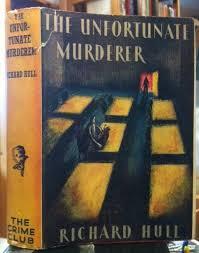
Richard Hull was the name under which R.H. Sampson, one of Britain's few crime-writing accountants, wrote rather unorthodox fiction for roughly twenty years. To some extent, he was influenced by Anthony Berkeley/Francis Iles, but his work was often rather original and unpredictable, and as I mention in The Golden Age of Murder, it even attracted the attention of Jorge Luis Borges.
My Forgotten Book for today is a Hull novel written and set during the Second World War. The Unfortunate Murderer (1941). It begins very well, with the scene set by a government auditor who has been sent to a munitions factory, only to stumble across a murder. Hull's wit, displayed as early as the Acknowledgements page at the start of the book, is in evidence at times, but he does not indulge his taste for irony as extensively as in some of his other novels.
The murder is quite cleverly contrived, but the story does, I regret to say, become rather bogged down, and a thin and frankly uninteresting espionage sub-plot doesn't help. On the whole, I was more taken with the portrayal of business life - something Hull knew rather more about than some of his fellow Golden Age writers - and the wartime background. The factory is based somewhere in north Wales, unspecified but possibly in the vicinity of Wrexham, which is definitely an under-used location in the genre. But the solution to the killing was,for me, a let-down.
This isn't a book that has ever been much discussed, but a contemporary review in The Spectator said it was "nearly very good"and praised the freshness of the writing. Despite my enthusiasm for Hull, I think this errs a little on the side of generosity, but even his minor and less successful mysteries usually offer something of interest, and I found it a quick and agreeable read. But the book he wrote just before this one, , is definitely superior.
Published on September 30, 2016 01:34
September 28, 2016
Dark Places - film review
Dark Places, first screened last year, stars (and is produced by) Charlize Theron, and is based on a book by that gifted author Gillian Flynn, whose Gone Girl is (arguably) the finest crime novel of the past ten years. And it is certainly not a bad film. But as that damning-with-faint-praise sentence suggests, it is hardly a masterpiece, either.
In addition to Gone Girl, I've read Flynn's excellent novel Sharp Objects, but I've not got round to Dark Places, so I didn't know quite what to expect as regards the film's storyline. In fact, it offers a great deal of potential. Libby (played by Theron) has survived a sensational killing thirty years ago in which her mother and two siblings died. Her brother Ben was convicted of the crimes, and is still in prison.
Libby is approached by a chap from a "Kill Club", an intriguingly eccentric bunch with a passion for real life crimes, and this prompts her to revisit her past. What she finds there, needless to say, is macabre and distressing. And - you are ahead of me here - it turns out that all was not as it seemed.
The premise is clever, and there is a lot to admire in this film. But Theron's muted performance - she spends almost the whole film looking moody and wearing a baseball cap - sums the film up: an opportunity has been wasted. Instead of a suspense classic, we have a rather protracted so-so mystery, and as a result we don't care very much about the truth of the crime, or about what happens to the protagonists. I came to this film with high expectations, which were to some extent disappointed. A real shame.
In addition to Gone Girl, I've read Flynn's excellent novel Sharp Objects, but I've not got round to Dark Places, so I didn't know quite what to expect as regards the film's storyline. In fact, it offers a great deal of potential. Libby (played by Theron) has survived a sensational killing thirty years ago in which her mother and two siblings died. Her brother Ben was convicted of the crimes, and is still in prison.
Libby is approached by a chap from a "Kill Club", an intriguingly eccentric bunch with a passion for real life crimes, and this prompts her to revisit her past. What she finds there, needless to say, is macabre and distressing. And - you are ahead of me here - it turns out that all was not as it seemed.
The premise is clever, and there is a lot to admire in this film. But Theron's muted performance - she spends almost the whole film looking moody and wearing a baseball cap - sums the film up: an opportunity has been wasted. Instead of a suspense classic, we have a rather protracted so-so mystery, and as a result we don't care very much about the truth of the crime, or about what happens to the protagonists. I came to this film with high expectations, which were to some extent disappointed. A real shame.
Published on September 28, 2016 14:59
Mr Holmes - film review
In Sherlock Holmes, Arthur Conan Doyle created such an entrancing character that the scope for exploring his potential and discussing his adventures is almost endless. Less than a fortnight ago, at Bouchercon, I found myself chatting about him with Leslie Klinger, a leading American Sherlockian, whose annotated editions of the stories are quite superb. Over the years, we've had all kinds of takes on Sherlock, and the 2014 film Mr Holmes presents him as a twinkly old buffer whose mind is starting to fade, but who has the chance to delve back into the past as well as coping with a challenge of the present.
The film is based on a book published in 2005 by American author Mitch Cullen called A Slight Trick of the Mind, which I haven't read. It's a very well-made film, and the cast includes several excellent actors in relatively small parts. So we have Roger Allam (Morse's dad in Endeavour) as Holmes' doctor, Phil Davis (playing a cop, not for the first time,but in a rather less menacing way than usual) and Frances de la Tour (who in my mind will always be Miss Jones in that very funny of-its-time sitcom Rising Damp). And the eternally versatile John Sessions plays Mycroft...
There are three main plot strands. One concerns Holmes' last case,in which he is consulted by a husband concerned about his wife. There's another set in Japan. And third and most important, we see Holmes in his dotage, still keeping bees, and bonding with the likeable son of his housekeeper. There's some poignancy in the story, but its impact is lessened by the fact the story moves along rather slowly, and I did find that my attention wandered.
Holmes is played by Ian McKellen with genial aplomb, but I felt that an actor such as John Hurt would have given an edgier performance. As it is, the film meanders elegantly along without, for me, ever becoming compelling.. It's unusual enough to be worth watching, but I'm afraid it won't be featuring on my list of the best twenty Sherlock Holmes films .
,
The film is based on a book published in 2005 by American author Mitch Cullen called A Slight Trick of the Mind, which I haven't read. It's a very well-made film, and the cast includes several excellent actors in relatively small parts. So we have Roger Allam (Morse's dad in Endeavour) as Holmes' doctor, Phil Davis (playing a cop, not for the first time,but in a rather less menacing way than usual) and Frances de la Tour (who in my mind will always be Miss Jones in that very funny of-its-time sitcom Rising Damp). And the eternally versatile John Sessions plays Mycroft...
There are three main plot strands. One concerns Holmes' last case,in which he is consulted by a husband concerned about his wife. There's another set in Japan. And third and most important, we see Holmes in his dotage, still keeping bees, and bonding with the likeable son of his housekeeper. There's some poignancy in the story, but its impact is lessened by the fact the story moves along rather slowly, and I did find that my attention wandered.
Holmes is played by Ian McKellen with genial aplomb, but I felt that an actor such as John Hurt would have given an edgier performance. As it is, the film meanders elegantly along without, for me, ever becoming compelling.. It's unusual enough to be worth watching, but I'm afraid it won't be featuring on my list of the best twenty Sherlock Holmes films .
,
Published on September 28, 2016 04:30
September 26, 2016
Collecting Crime Fiction
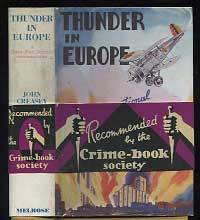
There is, it seems to me, increasing interest in collecting crime fiction. This is reflected in a new Pan Macmillan blog post on the subject. PanMac talked to the rare book dealers, Peter Harrington, who in turn asked me for my thoughts. Take a look at that illustrated copy of Poirot Investigates, then take a deep breath, and take a look at the price. £75,000! Wow...
Coincidentally, it was a first edition copy of Poirot Investigates that first fired my interest in rare and collectible detective fiction. My law firm decided to celebrate my 21st anniversary with the business, and presented me with a copy. No dust jacket, needless to say, (I've since acquired a facsimile of the original to keep the book in good condition) but I was and remain enormously pleased by this wonderful gift.
Until that time, I'd been an avid collector of crime fiction, but entirely from the point of view of reading the books. Given the choice between a first edition and a cheap and battered copy, I'd opt for economy every time. But Poirot Investigates introduced me to a new world, which I have to say I have found unexpectedly fascinating and rewarding. I soon became enamoured of signed and inscribed books from the past, and those of you who have read The Golden Age of Murder will know that these made a very significant - and, I like to think, unusual, perhaps unique - contribution to that book.
My most recent major acquisition was at Bouchercon just over a week ago. I decide to celebrate my receipt of the Macavity award by buying a rare item - a first American edition of Bruce Hamilton's first book, To Be Hanged - complete with blurb from his famous godfather, Sir Arthur Conan Doyle, and the original wrap-around band which is in itself scarce. I'll be adding that to my web page on collecting crime fiction before long. In the meantime, the illustration at the top of this blog shows another unusual book - John Creasey's long-forgotten thriller Thunder in Europe, again with a wrap-around band, and most interestingly of all, with a personal inscription to fellow thriller writer Dennis Wheatley.
Published on September 26, 2016 02:56
September 23, 2016
Forgotten Book - Till Death Do Us Part
Another Forgotten Book today from one of my favourite maestros of the Golden Age. First published in 1944, Till Death Do Us Part is a very well-regarded novel by John Dickson Carr, and I'm not about to dissent from the reviewers' chorus of approval. The setting is an English country village (there is even a cricket match, as well as a village fete), nicely evoked by this most Anglophile of American writers, and the detecting is done by Carr's premier sleuth, Dr Gideon Fell.
Richard Markham is, at the start of the story, blissfully happy. He's just become engaged to be married to the delightful, if rather mysterious, Lesley Grant. But in a crime novel, every silver lining has a cloud, and unfortunately one of the star attractions at the village fete is a fortune teller. Dick learns that the fortune teller is Sir Harvey Gilman, a famous criminologist, and before long he is being told something rather terrible - Lesley Grant is not the woman she appears to be.
Dick Markham learns that Lesley has been associated with three poisonings; in each case the victim was the man in her life. There was never any evidence to establish her guilt of murder, but the coincidence is appalling. Dick is not, however, destined for an early grave. In fact, it is the fortune teller who meets an unnatural end - poisoned in exactly the same way as Lesley's three supposed victims.
The plot twists and turns very nicely. One of the characters, Major Price, was evidently based on Carr's chum, the author John Rhode (who was also the model for Colonel March in another set of Carr stories). I thought I had solved the puzzle, but Carr bamboozled me - very satisfying in a fair play whodunit in the classic mould. This is an ingenious and highly enjoyable story, with a very pleasing solution and a brisk narrative pace. It's one of Carr's best books, I think.
Richard Markham is, at the start of the story, blissfully happy. He's just become engaged to be married to the delightful, if rather mysterious, Lesley Grant. But in a crime novel, every silver lining has a cloud, and unfortunately one of the star attractions at the village fete is a fortune teller. Dick learns that the fortune teller is Sir Harvey Gilman, a famous criminologist, and before long he is being told something rather terrible - Lesley Grant is not the woman she appears to be.
Dick Markham learns that Lesley has been associated with three poisonings; in each case the victim was the man in her life. There was never any evidence to establish her guilt of murder, but the coincidence is appalling. Dick is not, however, destined for an early grave. In fact, it is the fortune teller who meets an unnatural end - poisoned in exactly the same way as Lesley's three supposed victims.
The plot twists and turns very nicely. One of the characters, Major Price, was evidently based on Carr's chum, the author John Rhode (who was also the model for Colonel March in another set of Carr stories). I thought I had solved the puzzle, but Carr bamboozled me - very satisfying in a fair play whodunit in the classic mould. This is an ingenious and highly enjoyable story, with a very pleasing solution and a brisk narrative pace. It's one of Carr's best books, I think.
Published on September 23, 2016 04:14
September 21, 2016
Macavity and Mystery

I'm back from an exhilarating and unforgettable Bouchercon in New Orleans - wow, what a city, what a convention! So many highlights, so many wonderful experiences. Among them was receiving from Mystery Readers International the Macavity award for "Best Mystery-related Nonfiction" for The Golden Age of Murder. This is the 30th year of the Macavity awards, and previous winners in this particular category include such stars as Harry Keating and P.D. James. The very first winner, back in 1987, was 1001 Midnights by Bill Pronzini and Marcia Muller., a hefty volume which I've consulted countless times.
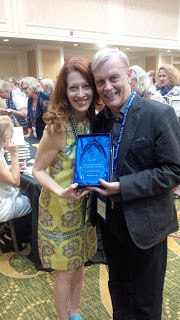
The above photo, taken just after the ceremony, shows me with Sharyn Rosenblum, Publicity Director of William Morrow, part of the Harper Collins group.I last had the pleasure of meeting Sharyn on another utterly memorable evening, back in April, when I received the Edgar award. In all, The Golden Age of Murder has now received four awards, three of them in the United States - an achievement that I'd have found impossible to believe had anyone predicted it during those long, long years when I was writing and revising the book, and wondering if anyone would ever want to read it, let alone publish it.

But let's begin at the beginning. I flew out from Manchester to Atlanta, and after boarding the plane to New Orleans, who else did I see taking their seats but two old mates, Ali Karim and Mike Stotter. We managed to get seats together, and on arrival at New Orleans airport discovered that, in this most extraordinary of cities, it was cheaper for the three of us to take a stretch limo to our hotel than to travel by airport shuttle or taxi. Well, it would've been rude not to seize such an opportunity, so we made our entrance in suitably surreal fashion.


I'd arrived in good time, so there was a chance to pack in some sightseeing before the convention began. I revisited the fabulous French Quarter, visited the cathedral (photo at the end of this post) and also, on the recommendation of several friends, toured the Audobon Aquarium, which is really impressive (sharks, piranhas, jellyfish et al - see below photos), before dining with Peter Rozovsky, of the Detectives Beyond Borders blog, my moderator for a panel first thing on Thursday morning. Then followed a fun party away from the convention centre, hosted by Kristopher Zgorski of BOLO Books. And, thank goodness, I managed not to oversleep and miss my panel.



Even at 9 am, there was a packed audience. Fellow panellists included Gary Phillips, and we were delighted to see the legendary Walter Mosley in the audience. Our subject was pulp fiction, but Peter was happy for me to talk about the magazine stories of that great British writer Michael Gilbert. About 1900 people were registered for the convention, and it was good to spend time with a number of old friends before the opening ceremonies, when the Macavity award was announced: here's a shot Ali took of me with fellow nominee from Norway, Jorn Lier Horst, and Mike.
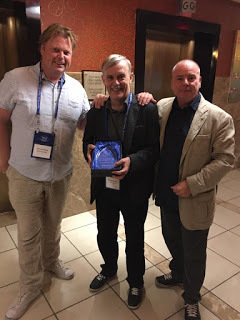
The rest of the convention passed in a happy whirl, which included breakfast with super-fans Bill and Toby Gottfried, dinner with Janet Hutchings of Ellery Queen's Mystery Magazine (just celebrating its 70th birthday) and guests including Hilary Davidson, Laura Benedict, and Charlaine Harris - see the photo below. Other highlights included coffee with Shelly Dickson Carr (grand-daughter of the locked room king John), lunch with Shawn Reilly Simmons, now a crime anthologist as well as a rising star novelist, the Anthony Awards, for which I was shortlisted in a nonfiction category won by Val McDermid, and dinner with Steve Steinbock of EQMM, author and actor Kathryn Leigh Scott, and John Pugmire of Locked Room International. John has involved me in an exciting new publication, of which more news in due course.
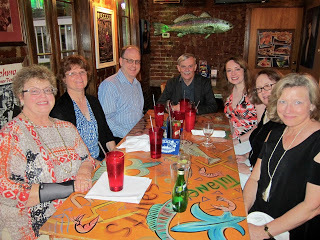

I moderated a second panel, on Golden Age mysteries, first thing on Saturday morning. Even in a large room, it was standing room only, a sure sign of the enthusiasm for GA fiction - especially given the competing attractions of the city and various other panels running at the same time. Cathy Ace, Ragnar Jonasson, Charlaine Harris, Claire Booth, and G.M. Malliet provided the audience with pithy and witty insights into the subject, and the only sad thing was that we couldn't go on for another hour. Thanks to Art Scott, whose The Art of Robert McGinnis I've just started reading, for this photo: from left to right - Ragnar, Charlaine, Gin, Claire, Cathy, and me.

There was more, much more, that one could say about such an exciting few days, but suffice to say that, if you're a crime fan who has not, so far, attended a major crime convention, then I think it's almost certain that you'd enjoy yourself hugely if you did so. And fellow convention-goers will, I'm sure, agree that the benefits of attending are cumulative - the more you do, the more you get out of them. It's now 26 years since I first attended a Bouchercon, at London in 1990, before I was even a published crime writer. A lot of water has flowed under the bridge since then, but I'm profoundly glad to belong to such a generous and giving community. .

Published on September 21, 2016 03:55
September 19, 2016
The Maltese Falcon
It's been many years since I last watched John Huston's legendary private eye movie, The Maltese Falcon, so when I came across it again on TV recently, I thought it was worth giving it another go and see how it's standing up to scrutiny after all these years. The short answer is: very well.
Dashiell Hammett's novel, on which the film is based, first appeared in 1930. The film came out eleven years later, and was, in fact, by then the third movie version. It was nominated for three Academy Awards, and I suppose it's best remembered for the performance of Humphrey Bogart as shamus Sam Spade. But there are equally splendid performances from Sydney Greenstreet, as Kasper Guttmann, and Peter Lorre as Joel Cairo - two of the most distinctive villains to have appeared on the big screen, it's safe to say.
The story begins, as so many private eye stories do, with an attractive woman (played by Mary Astor in this case) coming to the P.I.'s office and seeking his help. As usual, the woman in question - who calls herself Miss Wonderly - has something to hide. She wants a man called Thursby followed, for trumped-up reasons, but when Spade's partner Miles Archer goes out to do the job that night, he is shot. For good measure, Thursby is killed too.
The pace doesn't slacken as Spade finds himself caught up in a tangle that involves Archer's wife (with whom he's having an affair) and a small group of bad guys who are in search of the legendary Maltese Falcon. Miss Wonderly, whose real name is Brigid O'Shaughnessy, is evidently also mixed up in the business, somehow. Even if you're not a paid-up member of the Bogart Fan Club, there's enough here to keep you entertained on more than one viewing. Great stuff.
Dashiell Hammett's novel, on which the film is based, first appeared in 1930. The film came out eleven years later, and was, in fact, by then the third movie version. It was nominated for three Academy Awards, and I suppose it's best remembered for the performance of Humphrey Bogart as shamus Sam Spade. But there are equally splendid performances from Sydney Greenstreet, as Kasper Guttmann, and Peter Lorre as Joel Cairo - two of the most distinctive villains to have appeared on the big screen, it's safe to say.
The story begins, as so many private eye stories do, with an attractive woman (played by Mary Astor in this case) coming to the P.I.'s office and seeking his help. As usual, the woman in question - who calls herself Miss Wonderly - has something to hide. She wants a man called Thursby followed, for trumped-up reasons, but when Spade's partner Miles Archer goes out to do the job that night, he is shot. For good measure, Thursby is killed too.
The pace doesn't slacken as Spade finds himself caught up in a tangle that involves Archer's wife (with whom he's having an affair) and a small group of bad guys who are in search of the legendary Maltese Falcon. Miss Wonderly, whose real name is Brigid O'Shaughnessy, is evidently also mixed up in the business, somehow. Even if you're not a paid-up member of the Bogart Fan Club, there's enough here to keep you entertained on more than one viewing. Great stuff.
Published on September 19, 2016 03:00



